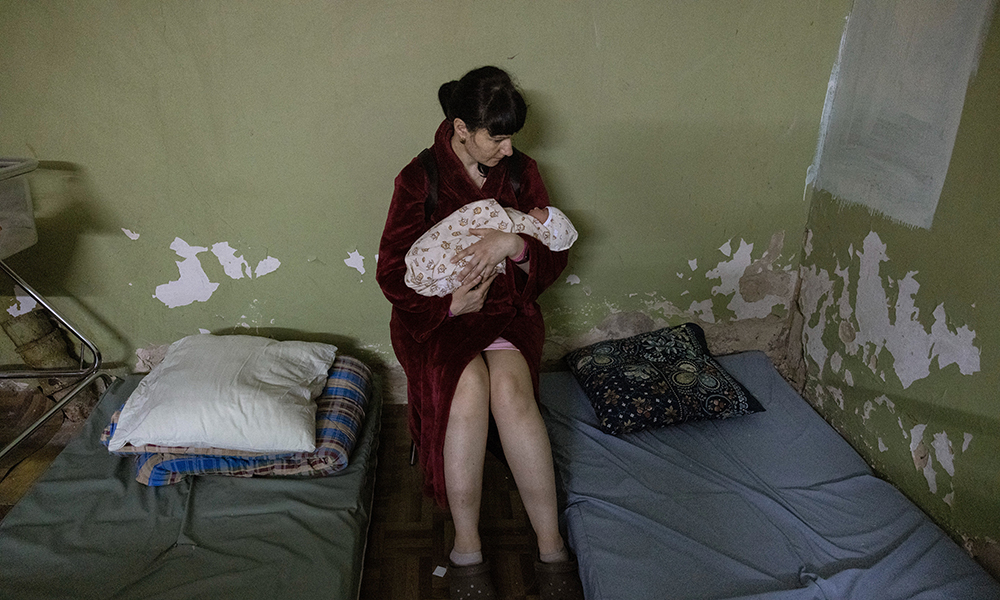怀孕或分娩是一种“极其危险的经历”,每两分钟就有一名女性死亡

根据联合国和世界卫生组织等机构的一份新的多机构报告,每两分钟就有一名女性因怀孕和分娩而死,而这些并发症大多可预防。
世界卫生组织总干事谭德塞(Tedros Adhanom Ghebreyesus)在上周四发布的有关该报告的新闻稿中表示:“虽然怀孕对所有女性来说都理应是充满希望而积极的体验,但对于世界各地数百万无法获得高质量、得到尊重的卫生保健的人来说,这仍是一段极其危险的经历。”
根据该报告,大出血、高血压、妊娠相关感染、不安全人工流产所致并发症以及可能因妊娠而加重的基础疾病(如艾滋病毒/艾滋病和疟疾)是孕产妇死亡的主要原因。作者指出,所有这些疾病“在很大程度上都可以通过获得高质量、得到尊重的卫生保健来预防和治疗”。
根据该报告,欧洲和北美的孕产妇死亡率从2016年到2020年分别上升了17%和15%。四个地区的孕产妇死亡率停滞不前,另外两个地区——澳大利亚和新西兰、中亚和南亚——的孕产妇死亡率在同一时期分别下降了35%和16%。
作者写道,大流行可能对这些数字产生了不利影响,并指出感染新冠病毒增加了妊娠并发症的风险。他们鼓励孕妇和计划怀孕者接种疫苗。
在全球范围内,2020年估计有28.7万名孕产妇死亡,仅略低于2016年估计的30.9万名。根据该报告,虽然从2000年到2015年在降低孕产妇死亡率方面取得了进展,但此后的进展基本停滞不前,甚至出现逆转。
孕产妇死亡往往集中在世界最贫穷的国家和受冲突影响的地区。2020年,全球约70%的孕产妇死亡发生在撒哈拉以南非洲。作者写道,在面临严重人道主义危机的国家,孕产妇死亡率是世界平均水平的两倍多。(财富中文网)
译者:中慧言-王芳
根据联合国和世界卫生组织等机构的一份新的多机构报告,每两分钟就有一名女性因怀孕和分娩而死,而这些并发症大多可预防。
世界卫生组织总干事谭德塞(Tedros Adhanom Ghebreyesus)在上周四发布的有关该报告的新闻稿中表示:“虽然怀孕对所有女性来说都理应是充满希望而积极的体验,但对于世界各地数百万无法获得高质量、得到尊重的卫生保健的人来说,这仍是一段极其危险的经历。”
根据该报告,大出血、高血压、妊娠相关感染、不安全人工流产所致并发症以及可能因妊娠而加重的基础疾病(如艾滋病毒/艾滋病和疟疾)是孕产妇死亡的主要原因。作者指出,所有这些疾病“在很大程度上都可以通过获得高质量、得到尊重的卫生保健来预防和治疗”。
根据该报告,欧洲和北美的孕产妇死亡率从2016年到2020年分别上升了17%和15%。四个地区的孕产妇死亡率停滞不前,另外两个地区——澳大利亚和新西兰、中亚和南亚——的孕产妇死亡率在同一时期分别下降了35%和16%。
作者写道,大流行可能对这些数字产生了不利影响,并指出感染新冠病毒增加了妊娠并发症的风险。他们鼓励孕妇和计划怀孕者接种疫苗。
在全球范围内,2020年估计有28.7万名孕产妇死亡,仅略低于2016年估计的30.9万名。根据该报告,虽然从2000年到2015年在降低孕产妇死亡率方面取得了进展,但此后的进展基本停滞不前,甚至出现逆转。
孕产妇死亡往往集中在世界最贫穷的国家和受冲突影响的地区。2020年,全球约70%的孕产妇死亡发生在撒哈拉以南非洲。作者写道,在面临严重人道主义危机的国家,孕产妇死亡率是世界平均水平的两倍多。(财富中文网)
译者:中慧言-王芳
One woman dies every two minutes from preventable causes related to pregnancy and childbirth, according to a new multi-agency report from the United Nations and World Health Organization, among others.
“While pregnancy should be a time of immense hope and a positive experience for all women, it is tragically still a shockingly dangerous experience for millions around the world who lack access to high quality, respectful health care,” World Health Organization Director General Tedros Adhanom Ghebreyesus said in a news release about the report, released Thursday.
Severe bleeding, high blood pressure, pregnancy-related infections, complications from unsafe abortions, and underlying medical conditions that can be aggravated by pregnancy (like HIV/AIDS and malaria) are the top causes of maternal death, according to the report. All such conditions are “largely preventable and treatable with access to high-quality and respectful health care,” the authors noted.
Maternal mortality increased in Europe and Northern American from 2016 through 2020, by 17% and 15%, respectively, according to the report. Rates stagnated in four regions, and declined in two others—Australia and New Zealand, and Central and Southern Asia—by 35% and 16%, respectively, during the same period.
The pandemic may have adversely impacted those numbers, the authors wrote, noting that COVID increases risks of pregnancy complications. They encouraged vaccination for pregnant women and women planning to become pregnant.
Worldwide, there were an estimated 287,000 maternal deaths in 2020, down only slightly from the estimated 309,000 in 2016. While gains were made in reducing maternal mortality from 2000 through 2015, those gains largely stalled, or even reversed, afterward, according to the report.
Maternal deaths tend to be concentrated in the poorest countries, and in areas experiencing conflict. In 2020, roughly 70% of global maternal deaths occurred in sub-Saharan Africa. And in countries facing severe humanitarian crises, maternal mortality rates were more than double the world average, the authors wrote.













